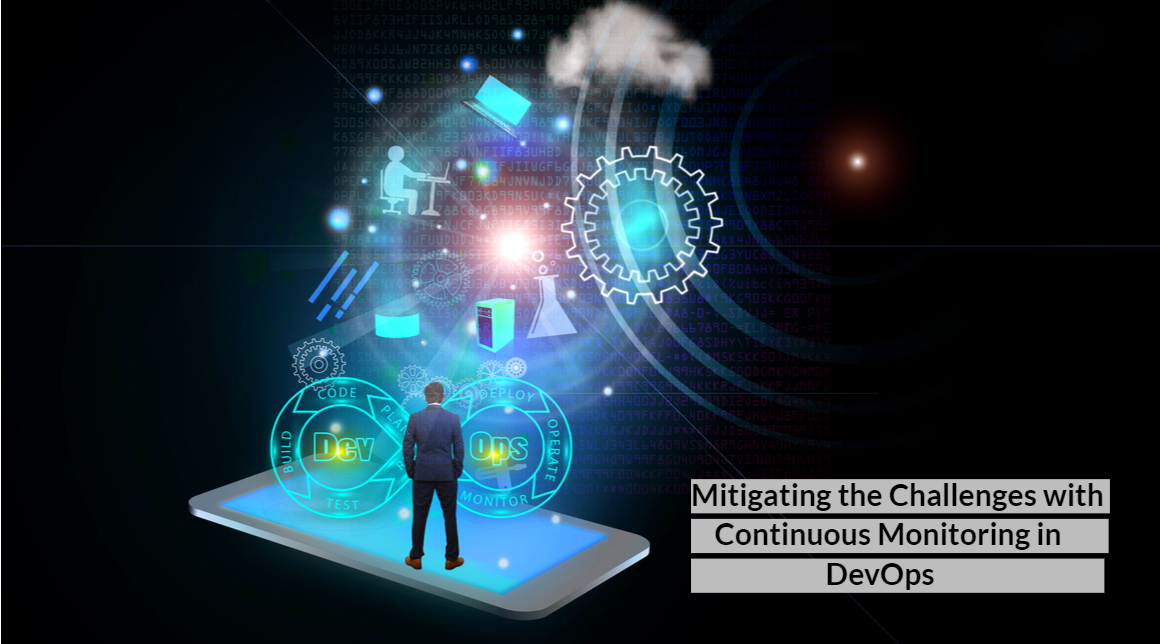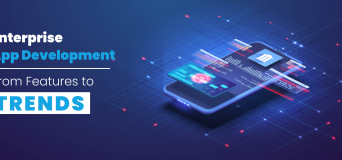
Here’s what you will learn:
While working with DevOps solutions, we often come across the term continuous testing, Integration, Automation, Deployment, etc. DevOps are an important operation of any organization. While working with DevOps solutions several organizations overlook one key ingredient i.e. monitoring, which can be an important component as testing or any other operation. For successful DevOps implementation, Monitoring can prove to be an important aspect that helps in preventing critical issues. As per research, most of the fortune 500 companies suffer 1.5 hours of downtime every week. This indicates that for 80 hours a year these company’s systems are not working properly.
According to stats, 98% of companies claim that downtown of 1 hour is equivalent to losing $100,000. Organizations in Manufacturing industries face approximately 23% of downtime due to human error, and negligence. Something that could’ve been prevented if we were keeping track of the processes beforehand. Most of the organizations even take care of these issues by hiring third-party Digital transforming services to help them in detecting these issues beforehand and take appropriate actions.
Numbers like these manifests the importance of monitoring the resources in DevOps solutions. Today, in the following article we’re going to look at some more of these consequences of Monitoring in DevOps.
Table of Contents
Magnitude of Continuous Monitoring in DevOps Solutions
Every organization understands the importance of getting to know the functional issues, performance deviations, and such things before they happen. It helps them in avoiding the worse at an early stage.
Improves User-experience
DevOps is one of the most important functions is to maintain the performance of your applications and services at par level. It helps the organizations to keep on fulfilling their consumer’s requirements. Continuous Monitoring in such cases allows companies to speculate the issues in no time while maintaining seamless communication between the developers and the operations team. Practices like this help organizations improve user-experiences with the production data.
Management and maintenance of Application
Applications are now a critical part of any organization. Hence, it is imperative for an organization to keep their applications up and running all the time while improving them on the side as well. Continuous Monitoring allows us to keep ourselves updated with the market trends and ensure seamless communication between the development and operational team throughout the process.
Identify and Resolve Issues Quickly
Continuous Monitoring services could lead to early detection of issues with server details. This could help the DevOps representatives in an enterprise to relay the information to the concerned team and get it fixed. This could save a lot of time. Furthermore, it also helps in saving a lot of resources that were needed before in manual testing and time to figure out which application has issues. Time is reduced to a great extent and can be utilized somewhere productive within the organization.
Meaningful Insights
Implementing the right kind of monitoring strategies can help you gather meaningful insights also about your applications’ performance and behavior. In some cases, organizations opt for an early monitor strategy with the help of digital transformation service providers. It offers a lot of benefits to the enterprise. For example, they can define the monitoring solution to focus on the test subject of the DevOps Solution or follow the behavior of specific users.
Faster Deliveries
Continuous monitoring allows DevOps Consultants to keep a check on new updates and additions. It is to ensure that no new feature addition is hampering with the Applications’ health, the database, or the performance. This is also helpful for the developers and operational teams as, without continuous monitoring, they’d have to do complete backtracking of the system just to determine the root cause of any issue. This could end in consuming a lot of time in releasing new upgrades.
Wrapping Up
With the continuously changing environment and tremendous advancement in the innovation world, organizations need to be proactive in mitigating the issues in production. Continuous monitoring is a one-stop solution for enterprise software and applications. It can be implemented at the start of the development process. Till the end of the development cycle and even after deployment monitoring can prove to be the most important solution. It’ll help the organizations speculate on the issues before anything major happens and implement the necessary changes to avoid downtime.
OrangeMantra, a leading digital transformation service provider, is quite an expert in offering enterprise software solutions. Get in touch with us now to leverage the knowledge of our experts and avoid unnecessary downtime and delays.
FAQs
Q1. What is monitoring in DevOps?
Monitoring is a process that provides insights and feedback about the production. This information is used by the DevOps engineers to mitigate the issues as quickly as possible to reduce the downtime and ensure that users are not affected.
Q2. Which DevOps tools are used for Monitoring?
Nagios is one such tool that can be used for implementing Continuous monitoring in the system. It is also Open-Source, and one of the most popular tools. Other popular tools are Jenkins and Travis CI
Q3. Why is continuous monitoring important?
Continuous Monitoring is an important activity and is used to assess the impact of changes, either planned or unplanned, on the information system, the hardware, software, or the environment overall.


